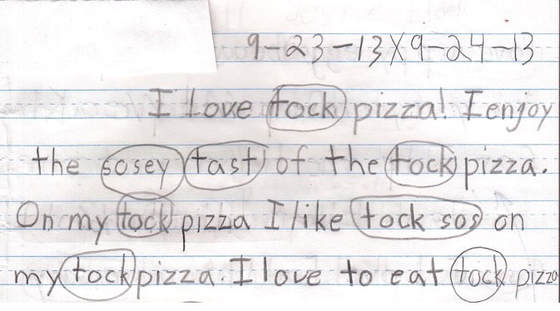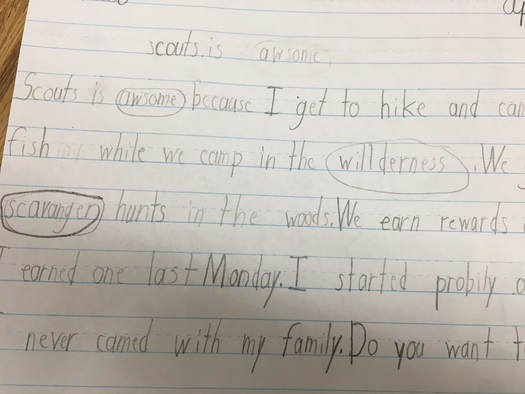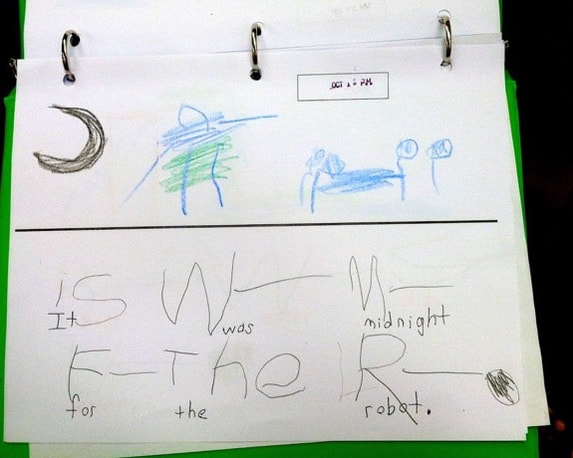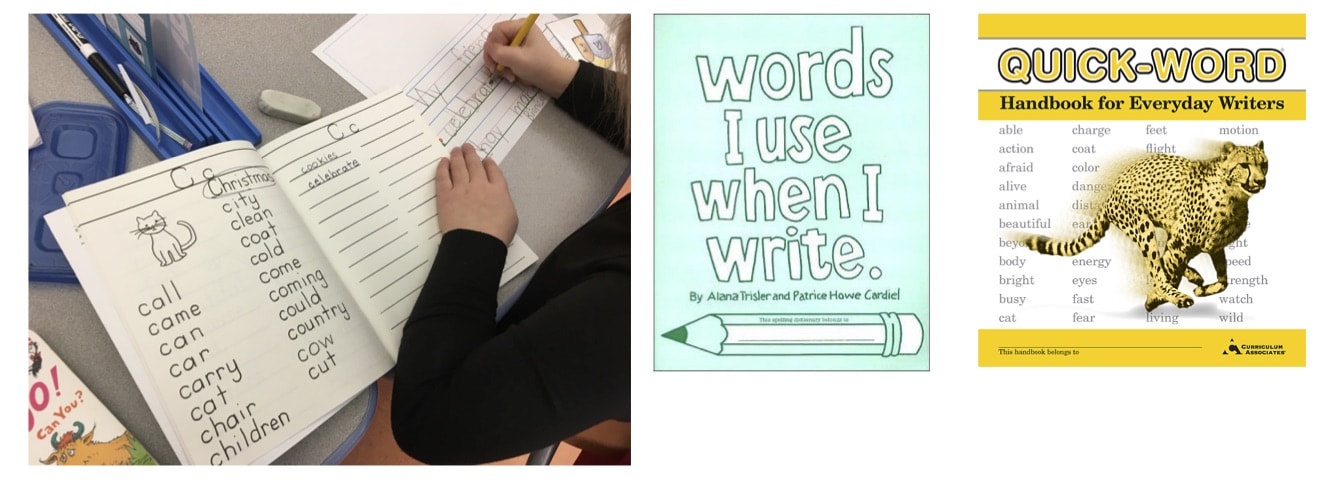|
I recently tweeted “It’s never to late to teach spelling strategies.” The tweet focused on the spelling strategy Get Close, Circle, Correct. At times, I’ve also called it Circle, Keep Going, Come Back, and Correct, which has a bit more rhythm to it. But no matter what you call it, its an easy to teach strategy that puts the responsibility for using correct spelling squarely in the court of the students. At the same time, it supports the difficult task of writing. Finally, it gives options for teaching students how to independently correct their spelling within their day-to-day writing. Via mini-lessons, teachers can easily come back to review and re-teach the strategy throughout the year, which helps students permanently add the strategy to their writing and spelling toolbox. One of the first things to teach student writers is to be aware. Specifically, they need realize that when they write, some of their words will probably be misspelled. Awareness, however, is only the first step. Spellers need to take action to navigate their spelling bumps and fill their spelling potholes. I often tell student writers that it is okay to misspell words while writing, but it is NOT okay to make no attempt to correct their misspellings. Students need to be responsible for fixing (as much as possible) the spelling mistakes they will inevitably make. Said another way, they need to take action! One of my favorite “take action” strategies is Circle the Word, Keep Going, Come Back, and Correct. The strategy has three parts: 1. Spell the word as best you can; 2. Circle the word you know is misspelled or you think is misspelled; and, 3. Go back and correct your circled words (or verify they are spelled correctly). To teach this strategy, model writing in front of your class and talk through a think aloud that explains how YOU spell words as you write. The following language might help you teach this strategy: “Writers sometimes don’t know how to spell the words they want to write. If you struggle to spell words as you write, don’t worry. And don’t spend too much time trying to figure out the spelling as you write. Spell the word as best you can and then circle it. Then keep writing. It’s important to focus more on your writing and less on spelling, at least at first.Writers work to get their thoughts down while they are still fresh in their minds. When you are done writing, you can go back and re-read for spelling. Circle any additional words that don't ‘look right’ to you, or any words you want to double check. Finally, correct the spelling of your circled words or verify that they are spelled correctly. This means:
If you teach kindergarten or first grade, having children circle words and then look them up in a dictionary may not be best. It depends upon the student and it depends upon how much time is spent looking up words (instead of concentrating on writing). I suggest that a more efficient teaching procedure for young writers is to simply provide the correct spelling of the word via underwriting. (See the next picture) For older students, such as students in second through fifth grade, finding words in a writer’s dictionary or the spelling section of a writing journal is appropriate. Looking up words in an old school dictionary is fine, too, especially for non-struggling students in 4th and 5th grade. At first, your students may fail to use the “circle the word and correct it” strategy, especially if you have been consistently allowing yourself to spell unknown words for them. But don’t lose heart. Keep modeling the strategy, keep your expectations high, and don’t give in to automatically spelling words for them when they ask, “How do you spell ___?”.
Expect students to regularly circle words and then to either use a strategy (like spell by analogy or use a mnemonic) or use a tool (such as a spell checker, word wall, or writer’s dictionary) to correct the words, or verify that the word has been spelled correctly in the first place. If you have children who regularly spell 99% or 100% of their written words correctly, then ask them to circle at least two words just to practice the strategy, and challenge them to use more advanced, interesting, and difficult-to-spell words in their writing. Finally, you may have to set a basement or a ceiling on the number of words circled. For the student who misspells many words but never circles any, provide a minimum number of words to aim for, such as, “I expect to see four words circled in every piece of writing.” And for the student who circles 10 or 15 words, set a limit so they’re not focusing exclusively on this strategy. Perhaps you could say, “You are working very hard to practice our strategy. Thank you for your effort. I want you to circle the five most important words to spell correctly. It's never too late to teach a spelling strategy. So, give Circle, Keep Going, Come Back, and Correct a try in May. I wish you the best with your end of the year efforts! Comments are closed.
|
Mark WeaklandI am a teacher, literacy consultant, author, musician, nature lover, and life long learner.
|




 RSS Feed
RSS Feed